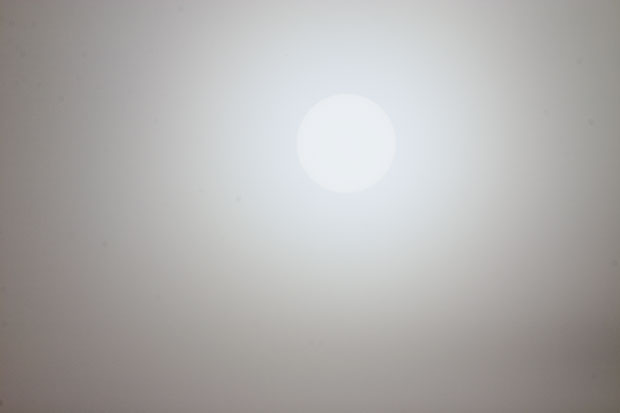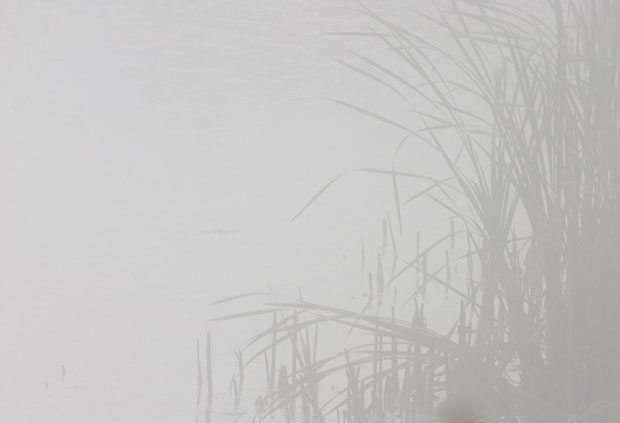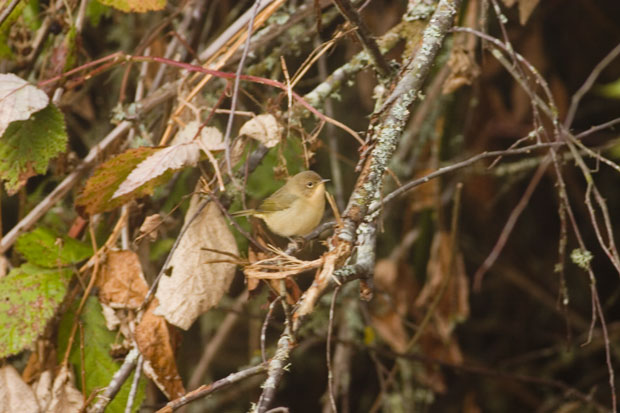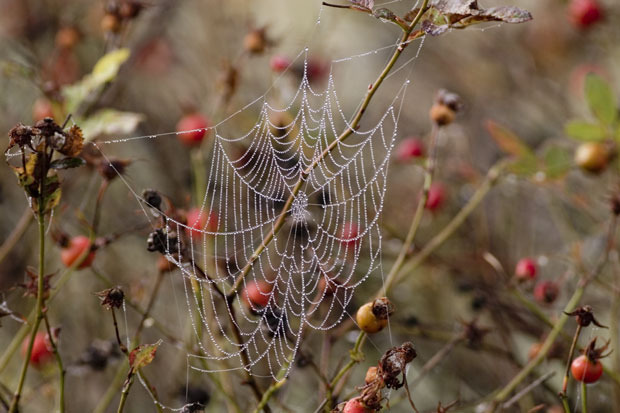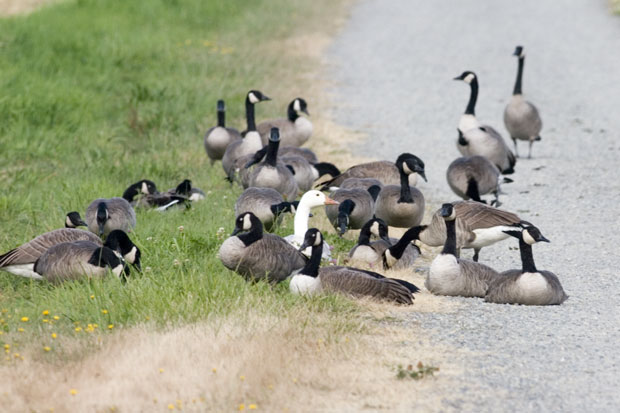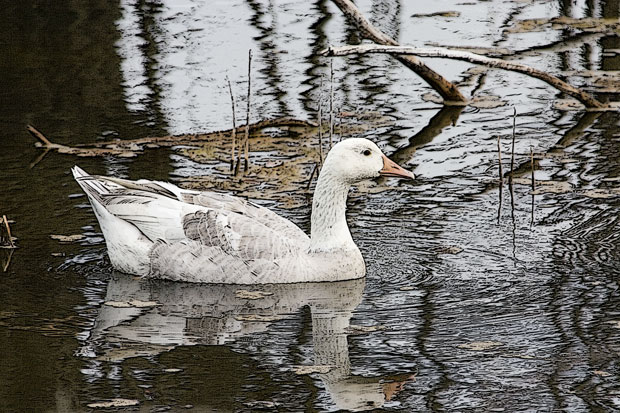Perhaps you’ve noticed that I’ve enjoyed playing around with heron shots since I started visiting the Nisqually National Wildlife Refuge. The more I worked with pictures of herons the more I understood why they are such powerful symbols in the Chinese and the Japanese literary tradition.
Of course, it doesn’t hurt that there are a magnificent bird not easily spooked, perfectly content to stand poised while you take picture after picture. For instance, this picture, like the ones I took of the Great Egret, is really two shots merged together only made possible by the heron’s stance:
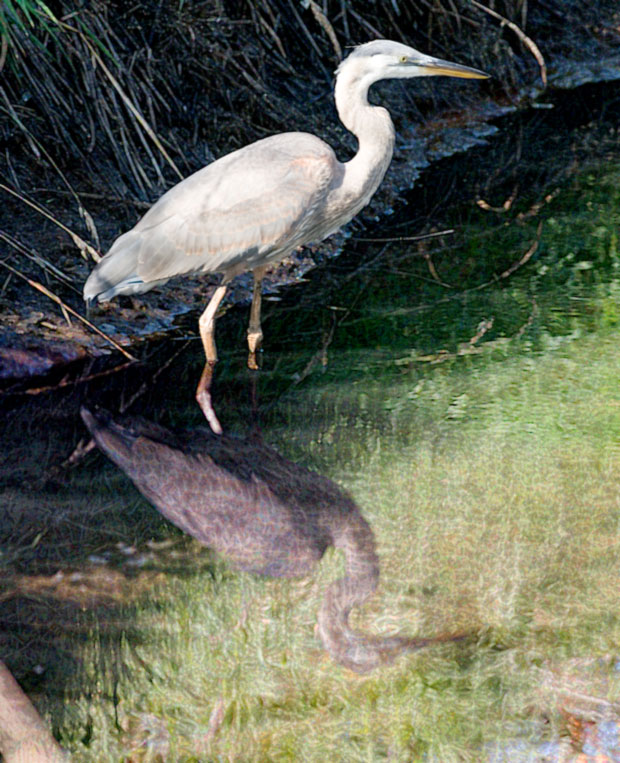
I’ve taken enough good pictures of Great Blue Herons that I think I’ve begun to overlook other potential shots in pursuit of a more unusual shot of other birds.
Two recent incidents suggested to me that perhaps I’ve become too complacent and that I should work harder to get even better shots of these magnificent birds.
The first incident took place a couple of weeks ago when I saw this magnificent heron in the distance, one whose plumage was quite different than the ones I’ve observed closer to the refuge:
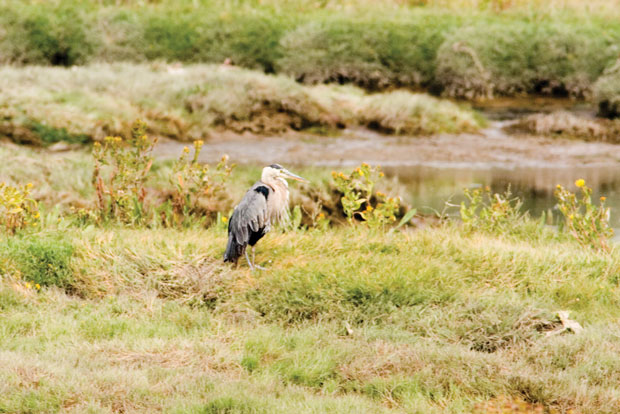
This week while walking I met and talked with Chris Yetter who’s been taking heron pictures for over a year. When I went to his web site, I knew that I had sold myself short in my efforts to get the best possible heron shots.

